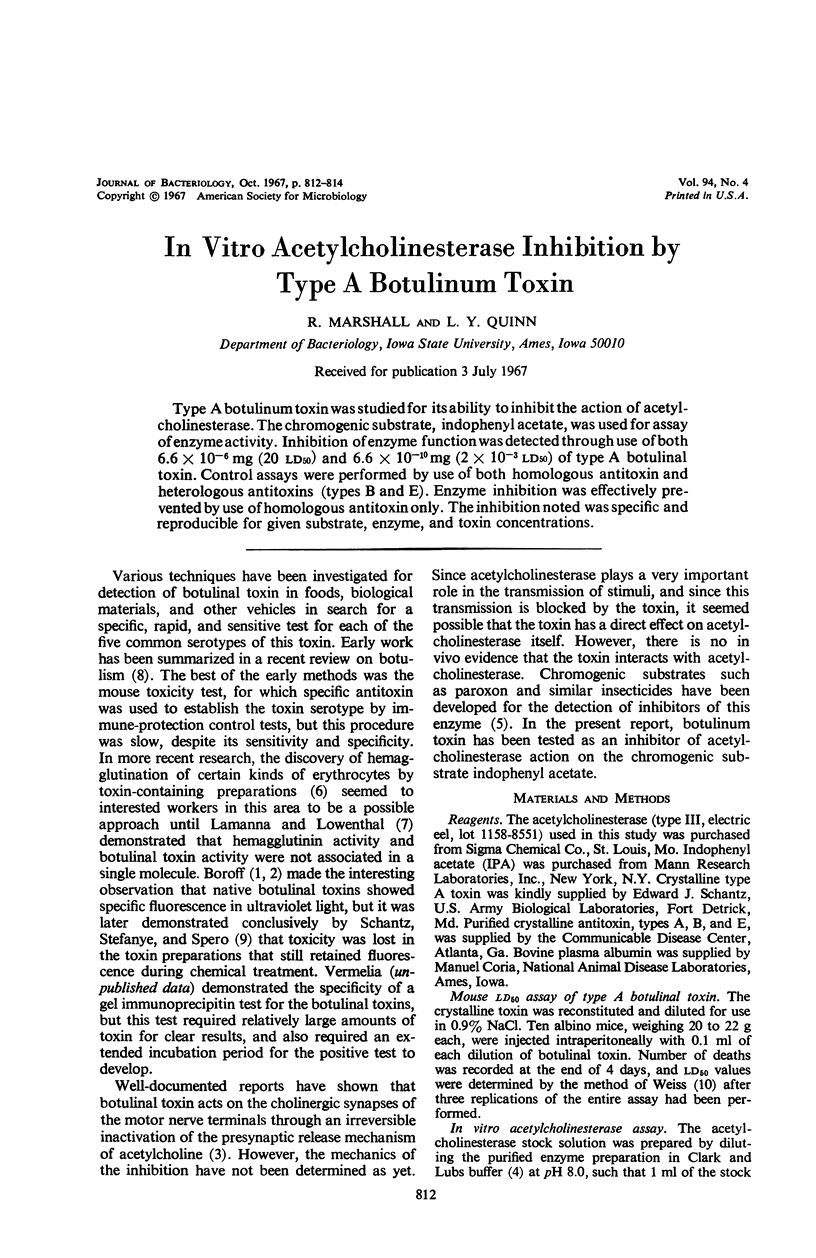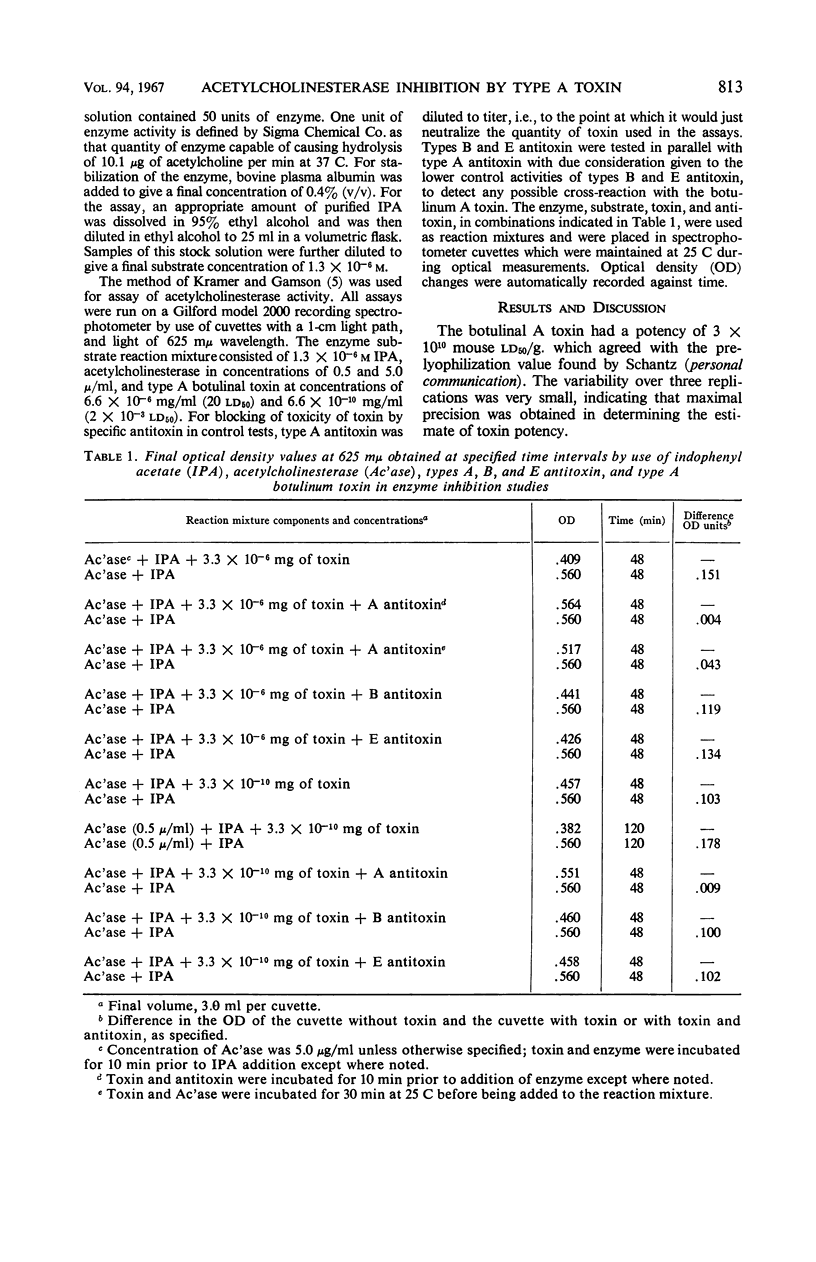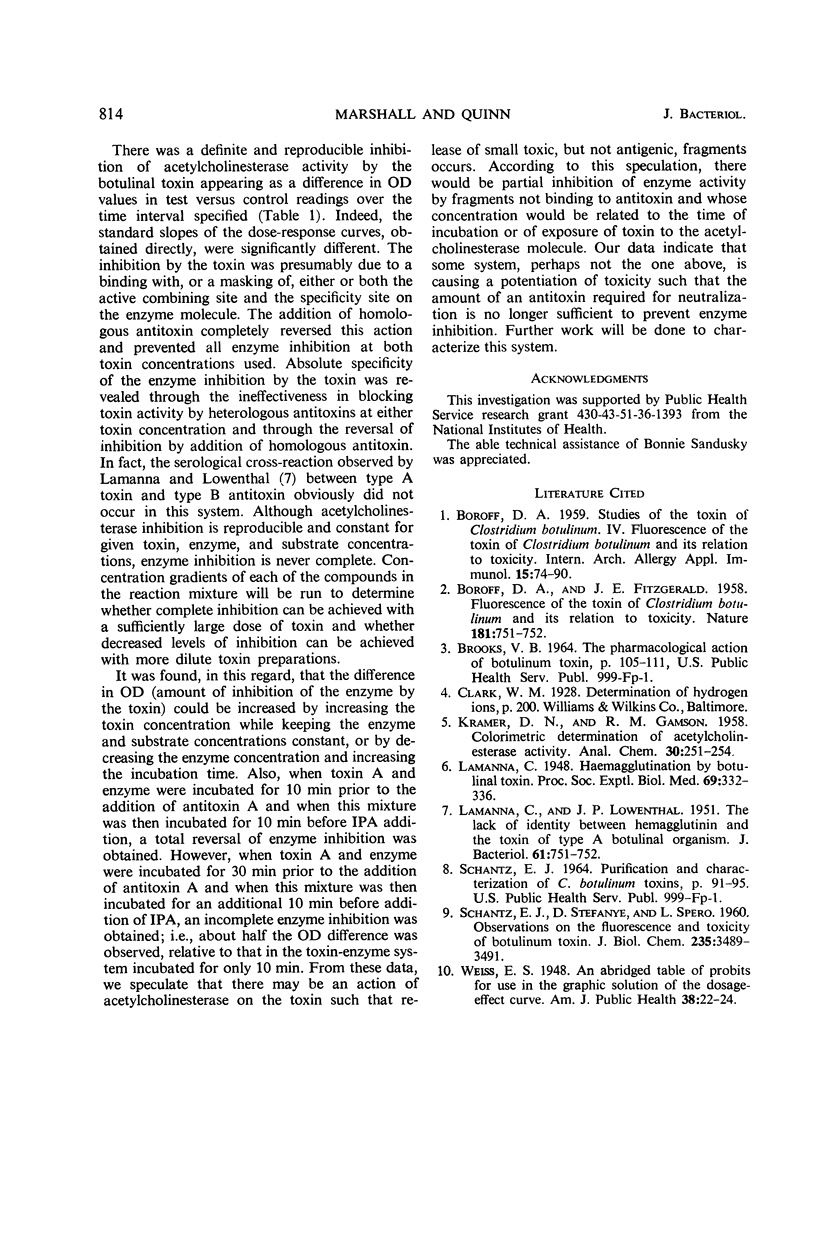Abstract
Type A botulinum toxin was studied for its ability to inhibit the action of acetyl-cholinesterase. The chromogenic substrate, indophenyl acetate, was used for assay of enzyme activity. Inhibition of enzyme function was detected through use of both 6.6 × 10−6 mg (20 ld50) and 6.6 × 10−10 mg (2 × 10−3ld50) of type A botulinal toxin. Control assays were performed by use of both homologous antitoxin and heterologous antitoxins (types B and E). Enzyme inhibition was effectively prevented by use of homologous antitoxin only. The inhibition noted was specific and reproducible for given substrate, enzyme, and toxin concentrations.
Full text
PDF


Selected References
These references are in PubMed. This may not be the complete list of references from this article.
- BOROFF D. A., FITZGERALD J. E. Fluorescence of the toxin of Clostridium botulinum and its relation to toxicity. Nature. 1958 Mar 15;181(4611):751–752. doi: 10.1038/181751a0. [DOI] [PubMed] [Google Scholar]
- LAMANNA C., LOWENTHAL J. P. The lack of identity between hemagglutinin and the toxin of type A botulinal organism. J Bacteriol. 1951 Jun;61(6):751–752. doi: 10.1128/jb.61.6.751-752.1951. [DOI] [PMC free article] [PubMed] [Google Scholar]
- SCHANTZ E. J., STEFANYE D., SPERO L. Observations on the fluorescence and toxicity of botulinum toxin. J Biol Chem. 1960 Dec;235:3489–3491. [PubMed] [Google Scholar]
- WEISS E. S. An abridged table of probits for use in the graphic solution of the dosage-effect curve. Am J Public Health Nations Health. 1948 Jan;38(1 Pt 1):22–24. doi: 10.2105/ajph.38.1_pt_1.22. [DOI] [PMC free article] [PubMed] [Google Scholar]


